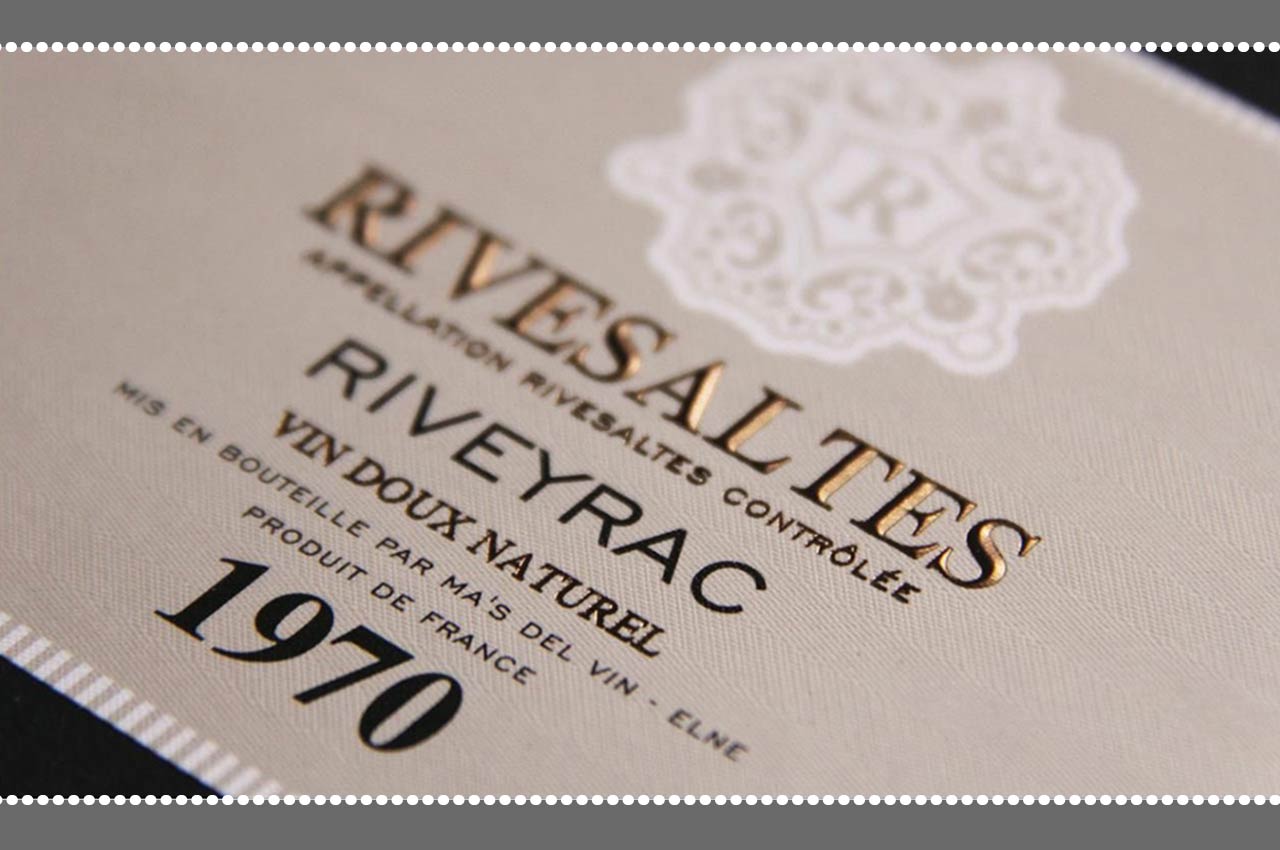Before suggesting food and wine pairings with natural sweet wines, a few explanations are in order to fully understand the type of wine we're dealing with.
As the name implies, vins doux naturels are natural sweet wines. sweet with sugar natural inside.
How is it done? A natural sweet wine is initially vinified in the classic way: during fermentation, yeast transforms the wine's natural sugars into alcohol. At the right moment, the winemaker will mutate the wine, i.e. add eau de vie (wine alcohol), which will suffocate and kill the yeasts. As you can see, without yeast in the vat, the natural sugar will no longer be transformed into alcohol, and will remain in its original sugar form. VDN (vins doux naturels) are generally found in warm, sunny climates, which favor a high concentration of flavor and sugar in the grapes.
The grape varieties used to produce vins doux naturels are very limited. These include Grenache, Malvoisie, Macabeu and Muscat. For muscatel wines, i.e. Muscats de Rivesaltes or Frontignan for example, only muscatel grapes are authorized.
In France, VDNs are found in the southern region. You'll find them under the names muscat de Rivesaltes, Banyuls, Beaumes-de-Venise and Cap Corse.
In the rest of the world, there is one wine that is surely the best known of the vins doux naturels... the porto for Portugal or marsala for Italy.
What dish to serve with a vin doux naturel?
It's not easy to match a dish with a VDN, since the wine will be sweet and highly aromatic. However, it lends itself to a few pairings throughout the meal.
- As an aperitifif you serve a Muscat de RivesaltesA classic and very traditional sweet and sour pairing is melon and Bayonne ham. A vacation classic that's always a hit.
- You can also serve it as inputwith a foie gras for example. The sweetness of the wine will work very well with the delicacy of the foie gras, but this time opt for a wine that is not too sweet. Porto or a VDN red with spice and character.
- The main course is surely the most difficult part of the meal to pair with a VDN. The wine's sweet texture and powerful mouthfeel require a dish with the same strength. That's why some Asian recipes that combine sweet and savory can be paired with certain VDNs that are not too sweet. In France, a duck à l'orange accompanied by a muscat de Beaumes-de-Venise could be a great tasting experience.
- A bit like Sauternes wines, VDNs go very well with a wide range of dishes. blue-veined cheeses. This time, the greediness and opulence of the wine will calm the structure of the cheese without being crushed.
- Finally, some vins doux naturels go very well with desserts. À 100 % Grenache aromas of cocoa and black fruits, which meet a chocolate cake will be a perfect match.
In another register, the marsala (Italian VDN) to enhance your recipe with tiramisu and should be drunk chilled at between 6 and 8 degrees.





![✨ Comptoir des Millésimes honors Champagne's great winemakers ✨[LINK TO THE ORGANIC CELLAR]We've selected 11 exceptional estates that reveal the full richness of Champagne terroir through unique, refined cuvées. Hugues Godmé - In Verzenay, this family-run biodynamic estate offers precise, vibrant champagnes with a beautiful mineral tension.Egly-Ouriet - A benchmark for the Montagne de Reims, its powerful champagnes, aged for long periods in barrel, impress with their complexity.Moussé Fils - In Cuisles, the Meunier grape is king. Pertois-Moriset - Pure, taut Chardonnay Grands Crus for lovers of chalky finesse. A fine address in Mesnil-sur-Oger.Geoffroy - In Aÿ, this domaine produces fine champagnes, carefully crafted and barrel-aged to reveal the full complexity of the terroir.Larmandier-Bernier - Biodynamic viticulture, exceptional parcels and purity. Crystal-clear, intense champagnes for connoisseurs.Roger Coulon - Eight generations of expertise at Vrigny. Balanced, subtle and elegant champagnes.A. Bergère - In Avize, a dynamic house offering expressive, fruity and accessible cuvées.Adrien Renoir - A promising talent from Verzy, he produces fine, complex champagnes with a true sense of terroir.De Sousa - Emblematic house in Avize. Richness, depth, long ageing: Chardonnay at its peak.Pierre Paillard - In Bouzy, the family magnifies Pinot Noir with vinous, racy and sincere cuvées.📦 Order now on our website#ComptoirdesMillésimes #Champagne #VigneronsIndépendants #GrandVin #ChampagnesdeTerroir #LivraisonRapide](https://www.comptoirdesmillesimes.com/blog/wp-content/plugins/instagram-feed/img/placeholder.png)